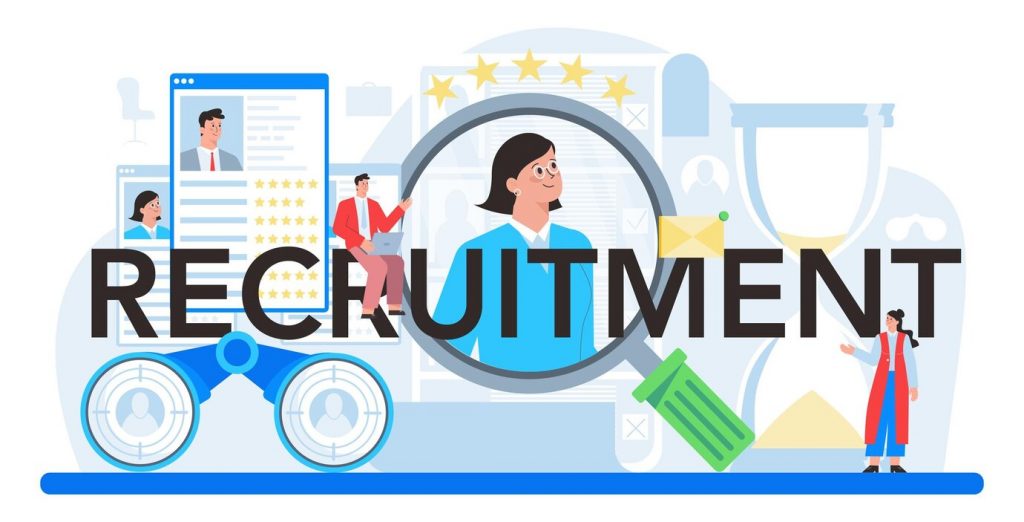Introduction
The corporate world has long been defined by invisible barriers that prevent capable professionals from advancing to leadership positions. This phenomenon, known as the glass ceiling in corporate hiring, disproportionately affects women, minorities, and other underrepresented groups, limiting diversity at the highest levels of organizations.
Despite decades of progress, glass ceiling statistics reveal persistent disparities. According to McKinsey’s Women in the Workplace report, women account for nearly 50% of entry-level employees but hold only 25% of executive leadership positions. Similarly, a study by the Center for American Progress found that Black professionals make up just 8% of managerial roles despite comprising 13% of the U.S. workforce.
For HR professionals and recruiters, understanding the glass ceiling in HR is critical to driving change. Organizations that fail to address hiring discrimination in the workplace risk stifling innovation, decreasing employee engagement, and falling behind competitors that prioritize inclusive hiring. This blog explores the glass ceiling’s impact, the biases that sustain it, and actionable strategies to dismantle these barriers.
Also Read: What is the Glass Ceiling? Understanding Workplace Barriers
Understanding the Glass Ceiling
The glass ceiling in recruitment is an entrenched, often unspoken limitation preventing diverse candidates from reaching leadership roles. This barrier is not explicitly stated in company policies but manifests in hiring, promotion, and retention decisions.
Historical Context and Evolution
The term “glass ceiling” was first coined in the 1980s to describe the unseen barriers that hinder women’s career progression. However, research over the years has shown that the problem extends beyond gender to include race, ethnicity, disability, and other underrepresented demographics.
For instance:
- A 2022 Harvard Business Review study found that women of color face “double jeopardy,” being significantly underrepresented at both senior and middle management levels.
- The World Economic Forum’s Global Gender Gap Report estimates that at the current rate, it will take 132 years to close the gender gap in leadership.
- A study by Lean In and McKinsey found that for every 100 men promoted to management, only 87 women and 82 women of color receive similar promotions.
Also Read: Role of AI in Eliminating the Glass Ceiling in Recruitment
Key Factors Contributing to the Glass Ceiling
- Unconscious Bias in Hiring – Research shows that resumes with names perceived as “ethnic” receive 50% fewer callbacks than those with Anglo-sounding names, highlighting implicit biases in recruitment.
- Lack of Sponsorship and Mentorship – Women and minorities often lack influential mentors or sponsors to advocate for their career advancement.
- Stereotypes in Leadership Perception – Leadership traits such as assertiveness and decisiveness are often associated with men, while similar traits in women may be perceived negatively.
- Rigid Workplace Structures – Many corporate policies do not accommodate working parents or individuals from diverse backgrounds, making it harder for them to climb the corporate ladder.
Impact on Corporate Culture and Diversity
Ignoring the glass ceiling in corporate hiring does not just harm individuals—it affects entire organizations.
Effects on Employee Morale and Retention
Employees who perceive limited career growth opportunities due to bias or discrimination are 3.5 times more likely to leave their organization. This leads to high turnover rates, which can be costly for companies. Gallup estimates that replacing an employee costs up to twice their annual salary in lost productivity and recruitment expenses.
Consequences for Organizational Diversity and Inclusion
Organizations that fail to prioritize diversity in corporate hiring often suffer from groupthink, reduced innovation, and difficulty attracting top talent. A Boston Consulting Group study found that companies with diverse leadership teams generate 19% higher revenue from innovation compared to those with homogenous leadership.
The Role of Leadership in Breaking the Glass Ceiling
Executives and HR leaders play a pivotal role in dismantling the glass ceiling effect. Companies like Salesforce have proactively adjusted pay disparities and implemented promotion tracking to ensure fair opportunities. Similarly, Unilever has committed to achieving a 50/50 gender balance across managerial roles, demonstrating that leadership commitment is crucial to change.
Also Read: Glass Ceiling in the Workplace: Signs, Impact & How to Address It
Strategies for HR and Recruiters
Addressing the glass ceiling in recruitment requires a combination of data-driven strategies and cultural shifts.
Best Practices for Identifying and Addressing Biases
- Blind Resume Screening – Removing identifying details such as names and photos from resumes can mitigate unconscious bias.
- Structured Interviews – Standardizing interview questions ensures that all candidates are evaluated on the same criteria.
- AI in Recruitment – AI hiring solutions like JobTwine help remove human biases by evaluating candidates based on skills and experience rather than subjective perceptions.
Implementing Training Programs to Promote Awareness and Inclusivity
- Bias Training for Hiring Managers – Studies show that organizations implementing bias training see a 46% improvement in diversity hiring.
- Leadership Development for Underrepresented Groups – Providing access to training programs and mentorship networks can bridge leadership gaps.
- Transparency in Career Progression – Companies like Accenture and Microsoft publicly track their diversity goals and progress, holding themselves accountable.
Developing Policies That Support Equitable Career Advancement
- Pay Equity Audits – Conducting regular salary audits helps identify and rectify wage disparities.
- Parental Leave and Flexible Work Arrangements – Companies with robust parental leave policies see a 25% increase in employee retention among working parents.
- Diversity Quotas in Leadership – Some companies set internal diversity targets to ensure more equitable representation in senior roles.
Also Read: Why Jobtwine is the Best IaaS Solution for Startups & Enterprises
Conclusion
The glass ceiling in corporate hiring remains a pervasive issue, but forward-thinking HR professionals and recruiters have the power to change this narrative. Addressing gender bias in hiring, ensuring transparency in promotions, and leveraging AI hiring solutions can create a more equitable corporate landscape.
Organizations that actively dismantle the glass ceiling in HR do more than improve diversity metrics—they foster innovation, enhance employee satisfaction, and ultimately drive better business outcomes. Companies that lead in diversity consistently outperform competitors, with McKinsey’s research showing a 35% higher financial return for firms with diverse executive teams.
It’s time for HR professionals, recruiters, and corporate leaders to take actionable steps to eliminate hiring discrimination in the workplace. By implementing data-backed hiring practices, championing inclusive leadership, and holding organizations accountable, the glass ceiling can be shattered once and for all.
Frequently Asked Questions:
What is the glass ceiling effect in HR?
The glass ceiling effect in HR refers to the invisible barriers that prevent qualified individuals—particularly women and minorities—from advancing to leadership roles within organizations.
How does the glass ceiling impact corporate hiring?
The glass ceiling leads to a lack of diversity in executive positions, reinforcing biases in hiring and promotion processes, and limiting overall business innovation and growth.
What are some examples of the glass ceiling in the workplace?
Examples include pay gaps between men and women, underrepresentation of women and minorities in leadership roles, and biased hiring decisions that favor certain demographics over equally qualified candidates.
How can AI help break the glass ceiling in recruitment?
AI can eliminate unconscious bias in hiring by evaluating candidates based on skills, experience, and performance data rather than subjective human judgment. Platforms like JobTwine ensure unbiased interview processes, helping companies build more diverse teams.
What steps can HR take to eliminate the glass ceiling?
HR professionals can implement structured hiring processes, conduct pay equity audits, provide mentorship programs, and leverage technology to promote fair and inclusive hiring.
This blog provides an actionable roadmap for HR professionals and recruiters looking to drive meaningful change. The future of corporate hiring depends on shattering the glass ceiling and ensuring that opportunities are accessible to all, regardless of gender, race, or background.




